Skiing is an exhilarating winter sport that combines the thrill of speed, breathtaking mountain scenery, and the joy of carving through pristine snow. However, like any adventurous activity, it comes with its share of risks. From unexpected weather changes to collisions on the slopes, the potential for mishaps is always present. But don’t let that deter you—with the right preparation and knowledge, you can minimise these risks and focus on the sheer joy of skiing.
Whether you’re a seasoned pro or a first-timer still mastering the art of staying upright, safety on the ski slopes is paramount. By taking a few simple precautions, you can ensure that your time on the slopes is as safe as it is enjoyable. This guide provides essential tips and insights to help you navigate the mountains responsibly, equipping you with everything from weather preparedness to knowing your limits. Read on to make the most of your skiing adventure while keeping yourself and others safe.
Skiing Rules of Conduct
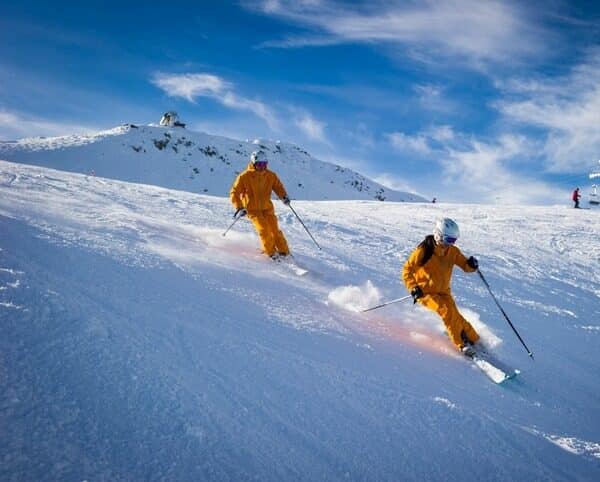
- Respect Others: Skiing isn’t a competition (unless it is!), so be mindful of those around you. No one appreciates being cut off or collided with—play nice!
- Control Your Speed: Flying down the slopes might feel like you’re in the Winter Olympics, but adjust your speed to suit your skill and the conditions. It’s not a race… usually.
- Overtaking: Fancy zooming past someone? Make sure you leave ample room so they don’t get spooked or lose balance.
- Yield: When joining a slope or starting off, take a moment to look uphill and give way. Think of it as the “zebra crossing” of the ski world.
- Stop Safely: If you must stop, pick a wide, visible area. Narrow spots are the skiing equivalent of parking in the middle of a roundabout.
- Assist in Accidents: If you witness or are involved in an accident, lend a hand. Call ski patrol and channel your inner Good Samaritan.
- Know and Observe Signs: Signs and markings are there for a reason. Follow them, even if you’re tempted by a shortcut or adventure.
Equipment
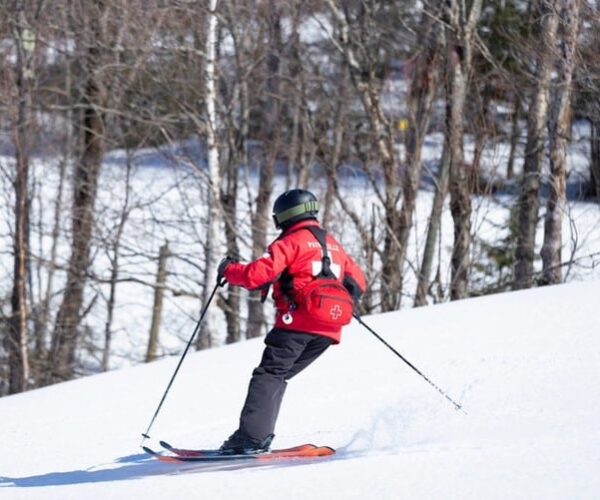
Ski or Snowboard: Ensure your skis or snowboard match your skill level. Fancy gear is great, but not if you can’t control it!
Bindings: Check those bindings. A professional tune-up can mean the difference between a graceful fall and a face plant.
Helmet: Fashion statement or not, a helmet is a must. Protect your noggin, because concussions are not the après-ski vibe.
Clothing: Dress in layers like a chic onion. Waterproof outerwear is essential, unless you enjoy skiing soaked.
Goggles and Sunglasses: Sun glare and snowflakes are not your friends. Proper eye gear keeps your vision clear and your eyes happy.
Avalanche Gear: Off-piste adventurers, take note: transceivers, shovels, and probes are lifesavers. And make sure you know how to use them!
What to do if you have a collision on the slopes
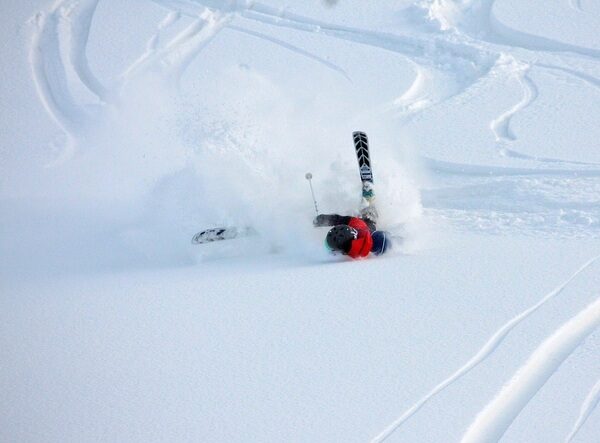
Collisions can happen even to the most careful skiers. Knowing what to do in the aftermath can make all the difference:
Check for Injuries: Pause and assess the situation. Is everyone okay? Speak to anyone involved and check for visible injuries. If you suspect a neck or spine injury, avoid moving the person—this is a task for trained ski patrol or medical professionals.
Stay Visible: Once everyone’s condition is assessed, ensure you’re not blocking the trail. If possible, move to the side or a safe area where you’re visible to other skiers, preventing further accidents.
Exchange Information: Like a fender bender on the road, swapping details is a must. Share names, contact numbers, and insurance information with all involved parties. Being polite and cooperative goes a long way here.
Report the Incident: Notify ski patrol or resort staff as soon as possible. These professionals are trained to document the incident, provide medical assistance, and handle any disputes or uncertainties. Don’t forget to provide a clear account of what happened.
Take Photos: If you’re able to, snap a few pictures of the scene, including any visible injuries or damage to equipment. This can be helpful for insurance purposes later.
Follow Up: After the incident, you might need to follow up with your insurance provider to ensure the details are logged and any necessary claims can proceed smoothly. It’s also considerate to check in with the other party to see how they’re doing.
What to do if the weather changes
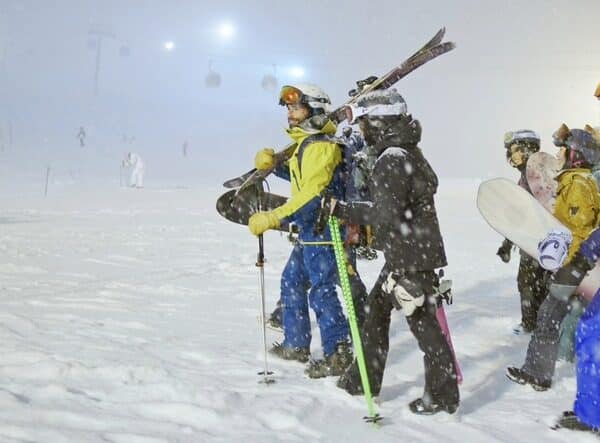
Weather in the mountains is about as predictable as a toddler. One minute it’s glorious sunshine, the next you’re in a whiteout. Here’s how to prepare and stay safe:
Monitor conditions: Before heading out, check the local weather forecast and keep an eye on updates throughout the day. On the slopes, be observant—dark clouds or sudden wind changes can be early warnings that the weather is turning.
Layer up: Always pack extra layers. A base layer to keep you warm, a mid-layer for insulation, and a waterproof outer layer are essential. Better to have too much and not need it than to be shivering halfway up the mountain.
Seek shelter: If the weather takes a turn for the worse, don’t be a hero. Head to the nearest lodge, café, or indoor area until conditions improve. And hey, it’s the perfect excuse for a hot chocolate or mulled wine!
Avoid risky areas: Low visibility and storms can make even familiar runs hazardous. Stick to well-marked trails and avoid going off-piste unless you’re with an experienced guide and fully prepared.
Carry essentials: A small backpack with items like a map, phone, snacks, water, and a compact first-aid kit can be a lifesaver if you get caught out. Don’t forget a whistle to signal for help if needed.
Know when to call it a day: Sometimes the best decision is to pack up and head down early. No ski run is worth the risk if conditions are unsafe.
What to do if there’s an avalanche
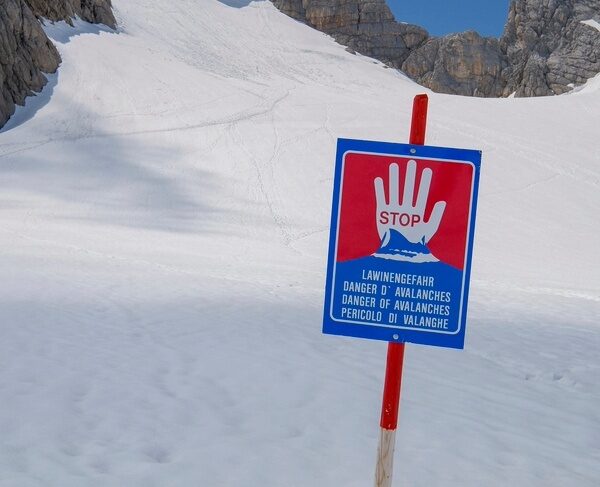
Avalanches are rare but serious and being prepared can be the difference between life and death. Here’s what to do if you encounter one:
Stay calm: Yes, it’s easier said than done, but panicking wastes precious time and energy. If you see an avalanche coming, try to escape to the side of its path. Avalanches typically move in a straight line downhill, so lateral movement is your best bet.
Discard gear: Heavy equipment like poles, backpacks, and skis can weigh you down or trap you in the snow. Let them go and focus on getting to safety.
Shout for help: If there are others nearby, call out to alert them. Not only can this warn them of danger, but it may also summon help if you get caught.
Create an air pocket: If you’re swept up in the snow, use your hands to form a small air pocket around your face and mouth. This can provide you with enough air to survive until help arrives.
Use transceivers: If you’re carrying an avalanche beacon, turn it on immediately to help rescuers locate you. Make sure everyone in your group knows how to use their transceiver before heading out.
Stay still: Once the avalanche stops, it’s important to remain as still as possible to conserve energy and avoid further sinking into the snow. Resist the urge to struggle unnecessarily.
Be Prepared: Prevention is key. Before skiing in avalanche-prone areas, take an avalanche safety course, carry the right gear (transceiver, shovel, probe), and travel with experienced companions. Always check the avalanche forecast and heed warnings.
Know your limits
Skiing is thrilling, but overdoing it isn’t worth the risk. Know your boundaries and respect them:
Skill Level: Stick to slopes that suit your ability. Green and blue runs exist for a reason—there’s no shame in perfecting your turns there. Attempting black diamond runs without the necessary skills could turn into a painful experience (literally).
Fatigue: Skiing demands focus and strength. If you’re feeling knackered, call it a day or take a break. Tired legs make for sloppy technique, increasing the risk of falls or injuries.
Fitness: A little pre-trip preparation can do wonders. Strengthen your legs and core with exercises like squats, lunges, and planks. The fitter you are, the more resilient you’ll be on the slopes.
Conditions: Pay attention to the snow and weather. If icy patches, low visibility, or slushy conditions make you uncomfortable, listen to your instincts and choose a safer run or head indoors.
Ski with a Buddy
Skiing solo might sound liberating, but it’s not the safest choice. Bring a mate along! Not only can they help in emergencies, but sharing the experience also makes it more fun. Laughing at each other’s wipeouts (in a friendly way!) is part of the charm. Plus, a buddy can take the perfect slope-side selfie to capture your adventure.
Take Lessons
Even seasoned skiers can benefit from brushing up on their technique. Instructors know the latest tips and tricks to help you refine your turns, improve your posture, and even master moguls or powder skiing. For beginners, lessons are essential to build confidence and learn the basics. Consider it an investment in your safety and enjoyment—and you might even pick up a cool new trick or two to show off to your friends.
How does insurance cover you on the slopes?
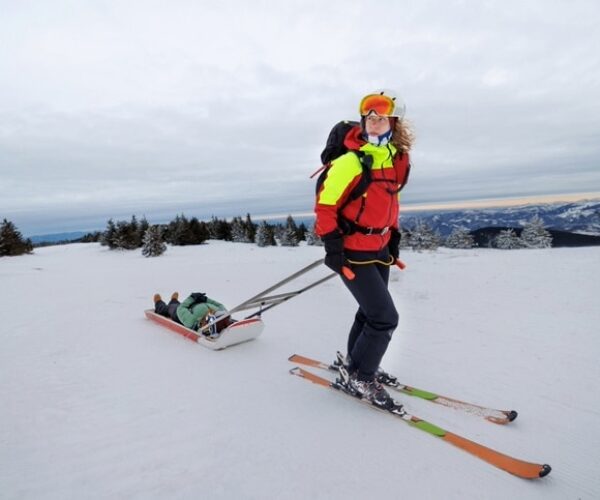
Insurance might not be glamorous, but it’s essential:
Medical Expenses: Covers treatment for those inevitable slips and tumbles.
Evacuation: Helicopter rides are exciting, but not when it’s for an injury. Make sure you’re covered.
Equipment Loss/Damage: Skis gone missing? Insurance can save you from a costly replacement.
Third-Party Liability: Accidents happen. This protects you if you’re at fault.
Trip Cancellation: Bad weather or other emergencies? Get reimbursed for your trouble.
Always double-check your policy for skiing-specific coverage, especially if you’re venturing off-piste.
Get Ski Insurance from SportsCover Direct
Having the right insurance isn’t just about peace of mind—it’s a critical safety net. From covering medical emergencies and equipment damage to providing assistance in case of evacuation, proper insurance ensures you’re fully protected before you hit the slopes. Make sure you have a specialist winter sports policy so you can focus on skiing without unnecessary worries.
SportsCover Direct’s ski insurance offers the essential cover to ensure you’re properly protected for your skiing premier. It offers cover for incidents such as cancellations, personal accidents, search and rescue, medical expenses, lost or stolen baggage and more.
Read more and get a quote online
This blog has been created as general information and should not be taken as advice. Make sure you have the correct level of insurance for your requirements and always review policy documentation.